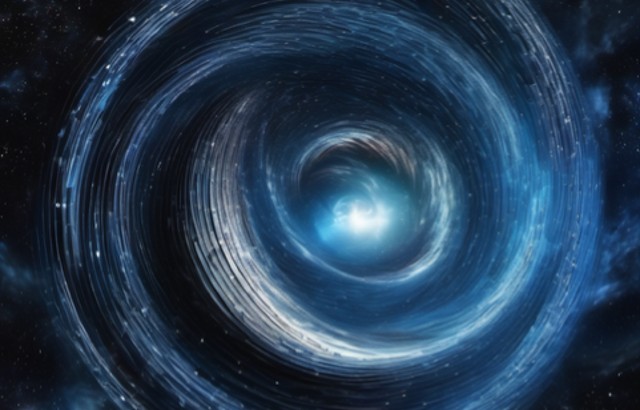THE LATEST
Warp drive mystery: Looking at the simulation of gravitational waves skeptically

The idea of warp drives, those iconic engines of science fiction that promise to propel spacecraft at speeds faster than light, has fascinated enthusiasts and scientists for decades. Recently, a new study has claimed to have dived into the theoretical realm of warp drives, simulating the gravitational waves that would come from a failing warp drive. While the notion of using negative energy spacetimes for interstellar travel sounds like something from futuristic dreams, there is skepticism about the ambitious claims made by this research.
The study, led by a collaboration among experts in gravitational physics from Queen Mary University of London and other academics, introduces numerical simulations that explore the repercussions of a warp drive experiencing a "containment failure". Dr. Katy Clough, the study's first author, suggests that by using numerical simulations, they hope to understand the potential impact of warp drives on spacetime through the lens of gravitational waves.
Although the research team acknowledges that warp drives remain purely theoretical constructs based on Einstein's General Theory of Relativity, the study asserts that numerical simulations can offer insights into the gravitational wave signatures associated with collapsing warp bubbles. The idea of detecting gravitational waves triggered by a failed warp drive, while intriguing, raises eyebrows among skeptics who question the plausibility of this hypothetical scenario.
The lineage of warp drive research stems from Miguel Alcubierre's groundbreaking work in the 1990s. The study's findings propose that the gravitational waves generated by a collapsing warp drive could be distinguishable from signals produced by astronomical phenomena like black hole mergers. However, the leap from theoretical simulations to practical detection methods remains a formidable challenge.
Intriguingly, the study illuminates the energy dynamics associated with a failing warp drive, describing a cascade of negative energy matter followed by alternating positive and negative energy waves. While this intricate interplay hints at a net increase in the system's energy, the implications of such phenomena raise skepticism about the plausibility of harnessing negative energy for warp drive technologies in the foreseeable future.
Despite the novelty of accurately modeling negative energy spacetimes and the intriguing prospects of utilizing gravitational wave detectors to search for signs of warp drive technology, the study's cautious tone mirrors the inherent skepticism surrounding the practical implementation of such speculative hypotheses. Dr. Clough's acknowledgment of the intrinsic skepticism about the likelihood of tangible results serves as a poignant reminder of the fine line between scientific exploration and science fiction.
As researchers embark on further investigations to explore the diverse implications of warp drives and negative energy spacetimes, the quest to unravel the secrets of the universe persists. While the theoretical pursuit of warp drive technology fuels curiosity and imagination, a skeptical lens prompts critical evaluation of the feasibility and practicality of such ambitious endeavors in the realm of interstellar travel.
In conclusion, while the simulation of gravitational waves from failing warp drives presents a fascinating narrative that merges science fiction with scientific inquiry, skepticism remains a crucial companion on the journey through uncharted territories of futuristic propulsion systems. Only time will tell whether these theoretical concepts will transcend into tangible technological breakthroughs or continue to reside in the speculative domain of theoretical physics.
